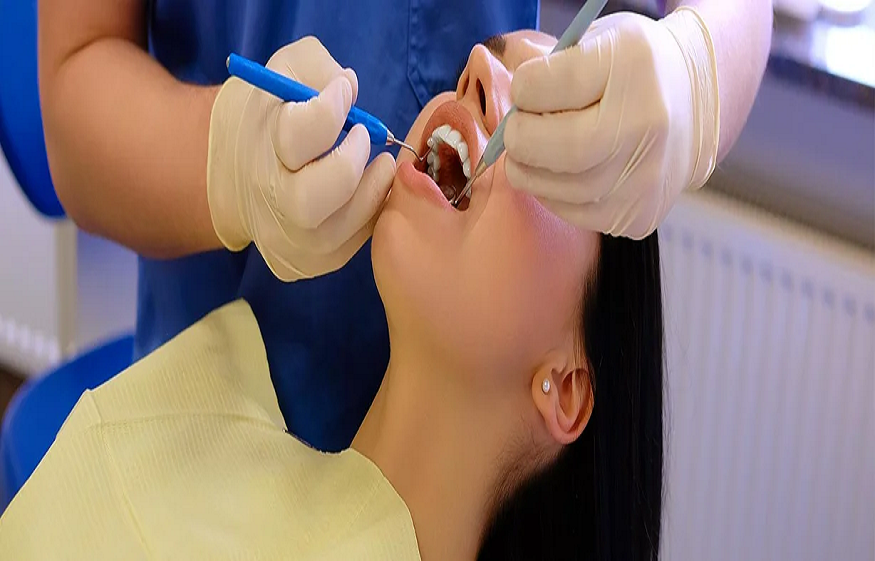Not all health issues arrive with pain. Sometimes, the quiet breakdown begins in how you function—how your tongue moves, how your facial muscles rest, how your body breathes without you noticing. A dentist may align your teeth, a physician may manage your symptoms, but the real cause can lie deeper—the functionality of the jaw-closing muscles or the intrinsic muscles of the tongue that silently spiral outward, showing up as digestive trouble, poor sleep, or chronic fatigue. That is where the expertise in oral myofunctional therapy comes in handy. The real art of care today isn’t just in treating symptoms—it’s in decoding these silent mechanics before they turn into noise.
1. Breathing Barriers: Reclaiming the Airway’s Architecture
Healthy breathing isn’t chance—it’s architecture, built by tone, posture, and awareness. When the tongue collapses into the airway during sleep, it doesn’t just interrupt rest—it rewrites energy levels, focus, and even heart function. Too often, patients are treated for the noise (snoring, fatigue) rather than the blueprint —the oral rest posture.
The innovators in health are changing that. Myofunctional Therapy reclaims breathing from the inside out —without machines or surgery —by strategically retraining the muscles that define airflow. For an individual seeking transformative treatment, this isn’t alternative care; it’s adaptive care. It’s sustainability in health form with long-term stability through neuromuscular precision, transforming a nightly struggle into effortless rhythm.
2. The Digestive Cascade: When the Tongue Falls Out of Rhythm
Digestion doesn’t begin in the stomach—it starts with movement, precision, and tone. The tongue is not a passenger; it’s the conductor. When its coordination slips, food moves down unevenly chewed, digestion weakens, and the body starts compensating in subtle but damaging ways.
Accurate clinical intelligence isn’t about quick fixes, but it’s about retraining the very function that sustains nourishment. That’s where specialized myofunctional therapy comes in. Through guided muscle re-education and careful assessment, we don’t just treat the symptom—we restore the sequence. For practices committed to excellence, this isn’t about offering more services; it’s about providing the right kind of precision—where every patient leaves not just relieved, but rebuilt from the inside out.
3. Suppressed Speech and Structural Oral Growth: Correcting the Dysfunctional Patterns
The tongue is an architect long before words ever form. In a growing child, it directs how the face develops, how the jaw aligns, and how the future smile takes shape. Restriction—like tongue-tie—or habitual mouth breathing quietly alters this blueprint. The result? Speech struggles, misalignment, and confidence that falters before it even forms.
- For pediatric cases, early intervention isn’t cosmetic—it’s developmental defense.
- Myofunctional integration in orthodontic treatment prevents relapse by addressing the root, not the aftermath.
- Establishing nasal breathing and a sealed-lip rest posture helps eliminate mouth breathing, which can cause adenoid facies or long face syndrome.
The true professional doesn’t just correct— they collaborate. They rebuild harmony between muscle and structure so that form follows function, and the outcome endures.
4. The Hidden Web: From Jaw Tension to Postural Balance
When the jaw locks, the shoulders rise. When the tongue sits wrong, the spine shifts. This isn’t metaphor—it’s mechanics. TMJ pain, neck tension, chronic fatigue—all often trace back to subtle asymmetries in muscle behavior. The tragedy is how frequently these go unnoticed.
Leading clinics are rewriting this reality. Through integrated therapy—combining TMJ treatment, laser-assisted soft palate work, and neuromuscular retraining—they’re restoring balance from the jaw downward. The strategy isn’t complicating the process; it’s a functional connection. Every joint, every muscle, every posture has a story—and the goal of modern care is to align those stories into one sustainable rhythm.
5. Cause of Crowded Teeth: Muscles Influence Teeth Alignment
At times, crowded teeth are not born—they’re built by function gone astray. Dental crowding often begins where function fails. The tongue, when weak or misplaced, doesn’t exert the upward and outward pressure that shapes the palate. Mouth breathing compounds this, drawing the facial structure downward and inwards.
Forward-looking medical solutions are moving beyond mechanical correction—aligners and braces—to include functional retraining through myofunctional therapy. This ensures results that last because the muscles support the structure rather than fight it. The true hallmark of specialization is recognizing that alignment without function is temporary, but alignment supported by muscular harmony is transformative.
Ultimately, real progress in health doesn’t come from offering more—it comes from listening deeper. Myofunctional expertise challenges the old idea of “fixing” and replaces it with “repatterning.” For practitioners and investors alike, this is where the future of care lives: at the intersection of science, strategy, and the quiet precision of human design.



